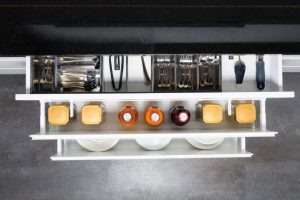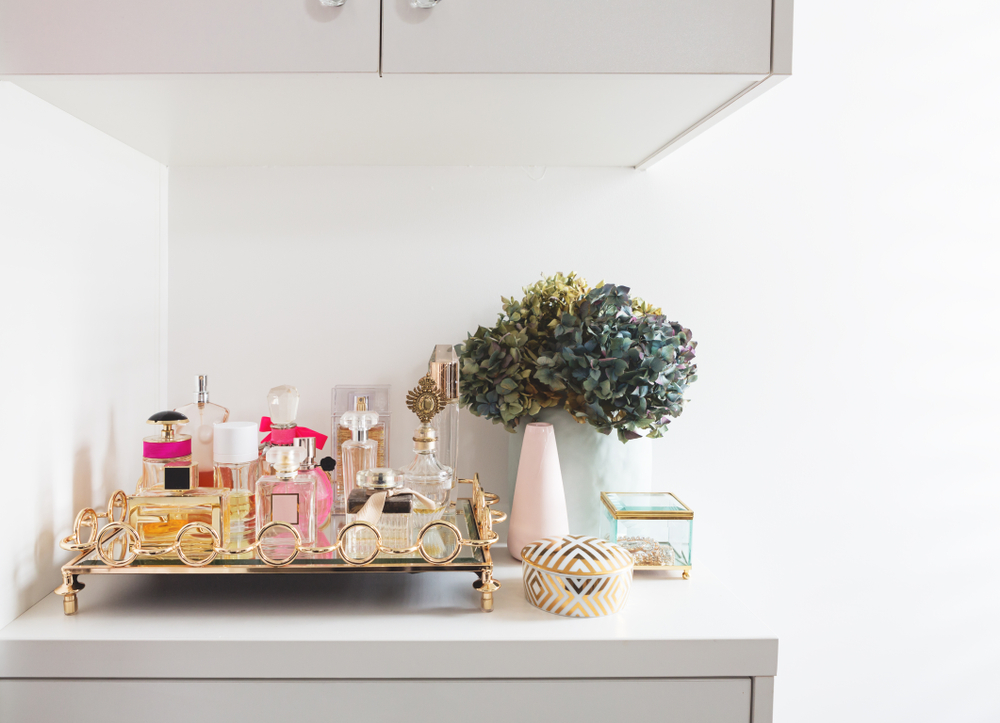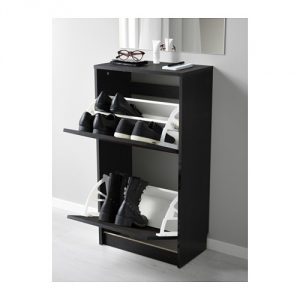The KonMari Method for an Organized Home

Japanese Marie Kondo rose to fame after publishing her book in which she explained how to organize homes and offices. Sometimes, it seems like even though we spend hours and hours tidying up… the house somehow disorganizes itself! To prevent this from happening, we recommend putting the KonMari method into practice. What’s the KonMari method? We’ll explain everything in this post.
The KonMari method is a product of Japanese Marie Kondo. In addition to helping us organize our house, it’ll allow us to free ourselves of anything that gets in the way or takes up space in our home.
What is the KonMari method?
The KonMari method goes beyond explanations on putting away clothes… It’s actually a life philosophy that values free space and objects not accumulating “just because”.
You could say that it’s a home “detox” technique and in order for it to work, you should only detox once. For example, we could take advantage of a weekend, a day off or a vacation to carry out all the steps in this method that require your dedication and compromise.
It starts from the point that every person has a different link with the objects in their surroundings. The method lies in eliminating the attachment that we have with these objects. Many of the things that we keep just take up space and are only there as a reminder of someone or something.
In addition, we should avoid buying cute items that have absolutely no use. Taking such measures will resolve future problems and help us live harmoniously in our home.
The rules of the KonMari method
This philosophy completely changes our concept of keeping a house in order. It can help us let go of things that occupy a lot of space, blocking energy flow as a result. Some of the KonMari rules are listed below.
1. If something begins, it must end
A common error we make is leaving things unfinished. This could be a result of laziness, lack of time or will, but one thing is certain: starting from where we left off again is much harder. If you want a house that’s always organized, you have to start and end with the KonMari method.

2. Organize by category
People normally clean and tidy by room or area: the kitchen, closet, desk… but we’ll never finish the job this way. In addition, when we clean by rooms, we have to go back and start from square one each time because they return to chaos.
Organizing chores by categories will let you know how many things you actually have in addition to assigning them a specific place. You can group your items: clothes, books, papers, objects, sentimental things, random objects, etc.

3. Organize when you’re happy
The author believes that the act of organizing should be a celebration, not something sad or guilt-ridden. Thus, we shouldn’t organize when we’re feeling down and very emotional!
Once we get into a slump, things will spread out into disarray again. On the contrary, if we put the KonMari method into practice, when we’re happy our brain sees the chores that we’re doing and won’t consider them to be an “escape route” to release pain.
4. Determine what you want to keep
The million-dollar-question here is: “what should I keep?” instead of “what should I throw out (give away or donate)?”. If we don’t know the answer, we have to think about what the object’s true purpose is in your life. What gives you a hard time throwing something away is probably emotional – an attachment to a past situation or person.
As for papers, there’s a special rule: throw away everything, except papers that are in current use, those that you might require in the short-term and those that you must keep (such as personal documents, warranties…).
It’s very important that what you throw away doesn’t become a problem for someone else: we might want to get rid of books that we’ve already read and take them to our old room at our parent’s house. Then they become a nuisance for our parents!

Once you’ve carried out the KonMari method, the next step is keeping things in order. If you classified everything correctly, you’ll assign a certain place for each item. You’ll keep things tidy automatically!
Japanese Marie Kondo rose to fame after publishing her book in which she explained how to organize homes and offices. Sometimes, it seems like even though we spend hours and hours tidying up… the house somehow disorganizes itself! To prevent this from happening, we recommend putting the KonMari method into practice. What’s the KonMari method? We’ll explain everything in this post.
The KonMari method is a product of Japanese Marie Kondo. In addition to helping us organize our house, it’ll allow us to free ourselves of anything that gets in the way or takes up space in our home.
What is the KonMari method?
The KonMari method goes beyond explanations on putting away clothes… It’s actually a life philosophy that values free space and objects not accumulating “just because”.
You could say that it’s a home “detox” technique and in order for it to work, you should only detox once. For example, we could take advantage of a weekend, a day off or a vacation to carry out all the steps in this method that require your dedication and compromise.
It starts from the point that every person has a different link with the objects in their surroundings. The method lies in eliminating the attachment that we have with these objects. Many of the things that we keep just take up space and are only there as a reminder of someone or something.
In addition, we should avoid buying cute items that have absolutely no use. Taking such measures will resolve future problems and help us live harmoniously in our home.
The rules of the KonMari method
This philosophy completely changes our concept of keeping a house in order. It can help us let go of things that occupy a lot of space, blocking energy flow as a result. Some of the KonMari rules are listed below.
1. If something begins, it must end
A common error we make is leaving things unfinished. This could be a result of laziness, lack of time or will, but one thing is certain: starting from where we left off again is much harder. If you want a house that’s always organized, you have to start and end with the KonMari method.

2. Organize by category
People normally clean and tidy by room or area: the kitchen, closet, desk… but we’ll never finish the job this way. In addition, when we clean by rooms, we have to go back and start from square one each time because they return to chaos.
Organizing chores by categories will let you know how many things you actually have in addition to assigning them a specific place. You can group your items: clothes, books, papers, objects, sentimental things, random objects, etc.

3. Organize when you’re happy
The author believes that the act of organizing should be a celebration, not something sad or guilt-ridden. Thus, we shouldn’t organize when we’re feeling down and very emotional!
Once we get into a slump, things will spread out into disarray again. On the contrary, if we put the KonMari method into practice, when we’re happy our brain sees the chores that we’re doing and won’t consider them to be an “escape route” to release pain.
4. Determine what you want to keep
The million-dollar-question here is: “what should I keep?” instead of “what should I throw out (give away or donate)?”. If we don’t know the answer, we have to think about what the object’s true purpose is in your life. What gives you a hard time throwing something away is probably emotional – an attachment to a past situation or person.
As for papers, there’s a special rule: throw away everything, except papers that are in current use, those that you might require in the short-term and those that you must keep (such as personal documents, warranties…).
It’s very important that what you throw away doesn’t become a problem for someone else: we might want to get rid of books that we’ve already read and take them to our old room at our parent’s house. Then they become a nuisance for our parents!

Once you’ve carried out the KonMari method, the next step is keeping things in order. If you classified everything correctly, you’ll assign a certain place for each item. You’ll keep things tidy automatically!







